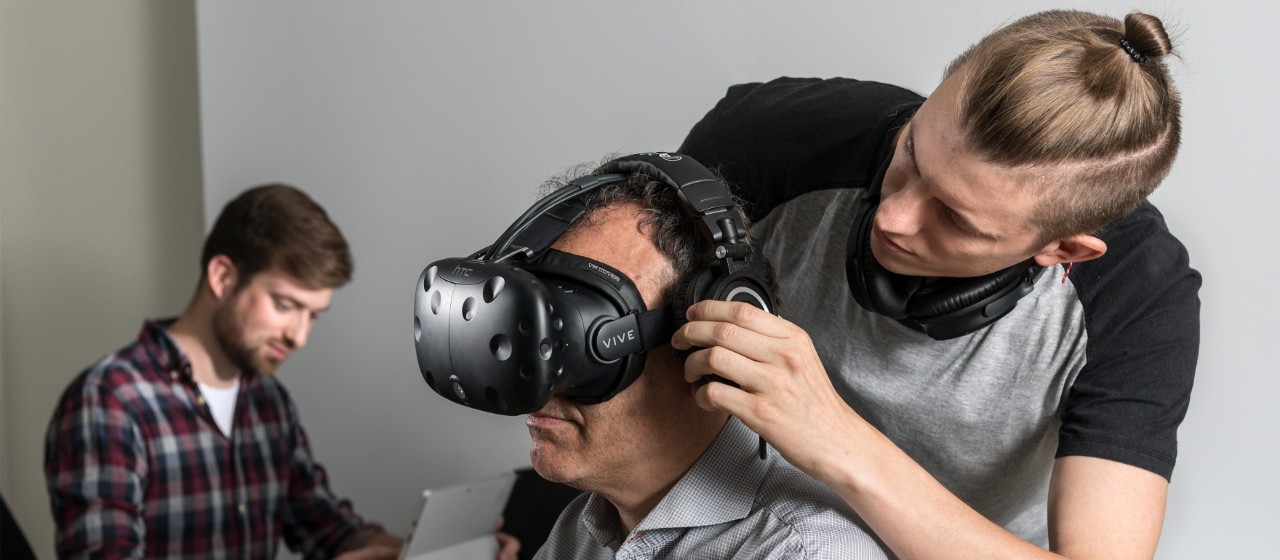
Safer environment for unprotected road users with Virtual Reality
27 NOVEMBER 2017
A truck is being driven through London. A cyclist comes round a corner and ends up in the driver’s blind spot. This all too common situation has not in fact arisen in the biggest city in the UK; but inside a building at Scania in Södertälje. The cyclist is sitting on a chair wearing a VR headset.
User Experience Researcher Constantijn Belderbos and his team have designed the truck, which is in a world created by Scania R&D.
They are testing future resources for distribution runs in inner city environments and ways of making things safer for both driver and unprotected road users. This time it is not about the driver’s perspective, but about how pedestrians and cyclists perceive Scania’s new resource in simulated city traffic, i.e. people who are exposed to vehicles on a daily basis – but from the outside.
Focus on assistive resources
The truck is designed to suit the driver, but needs to be comprehended by people round about. The focus is therefore on assistive resources that outwardly display the truck’s intentions in order to improve safety and communication.
“We want to know how effective these assistive resources are, how they can be improved, and what impression they give.”
So Gregory Ezelsdorfer from local sports club Team Cykelcenter is today sitting on a blue office chair in a small room at Scania in Södertälje and experiencing what it might be like to cycle in London. He is happy to be involved and contribute his experience.
“You have to know what’s going on the whole time when you’re in traffic.” Gregory usually cycles on main roads, where the biggest problem is usually trucks driving too fast and too close. He prefers to keep behind trucks, never going alongside.
In the test a number of challenging and unexpected situations are created that put both the driver and unprotected road users to the test.
Something that is also being tested is sensors that show that there is someone outside the truck despite that person not being visible. A cyclist is perhaps unaware that he or she is in the driver’s blind spot, and this increases the risk of an accident occurring.
Analysing scenarios
When Gregory and the other cyclists have completed the test they have to answer specific questions and analyse the various scenarios so that Constantijn and his colleagues can take this away with them and make refinements to their solutions.
“We want to see which concept works, and these tests allows us to glean viewpoints from experienced road users.”
The advantage of VR is that it is possible to change scenarios very quickly, and even alter details of the virtual truck in order to optimise its function. Now there is a whole city that can be used in several different situations, and the aim is for all types of truck to be included in a virtual library.
“It has taken a year to develop this environment, the city itself, the traffic and how the truck behaves. Now things are going much faster because we can reuse scenarios.”
Easy to test
That is also what makes it so easy to do the tests – you can adapt and develop as you go along, and only a little input is needed to be able to test different things.
“Seeing how the concept comes alive and how we can use the results to make our trucks even better in future – that’s the best!”